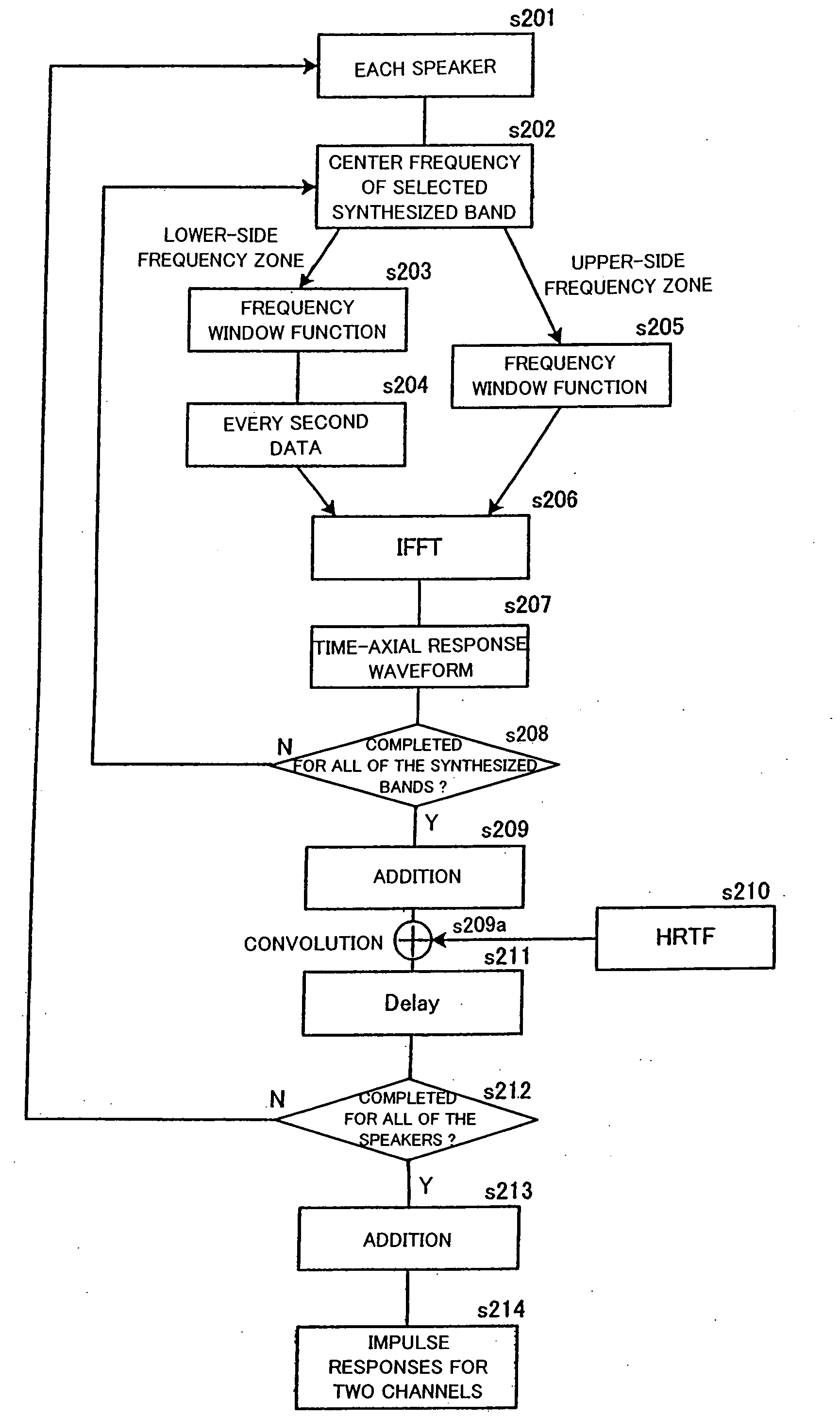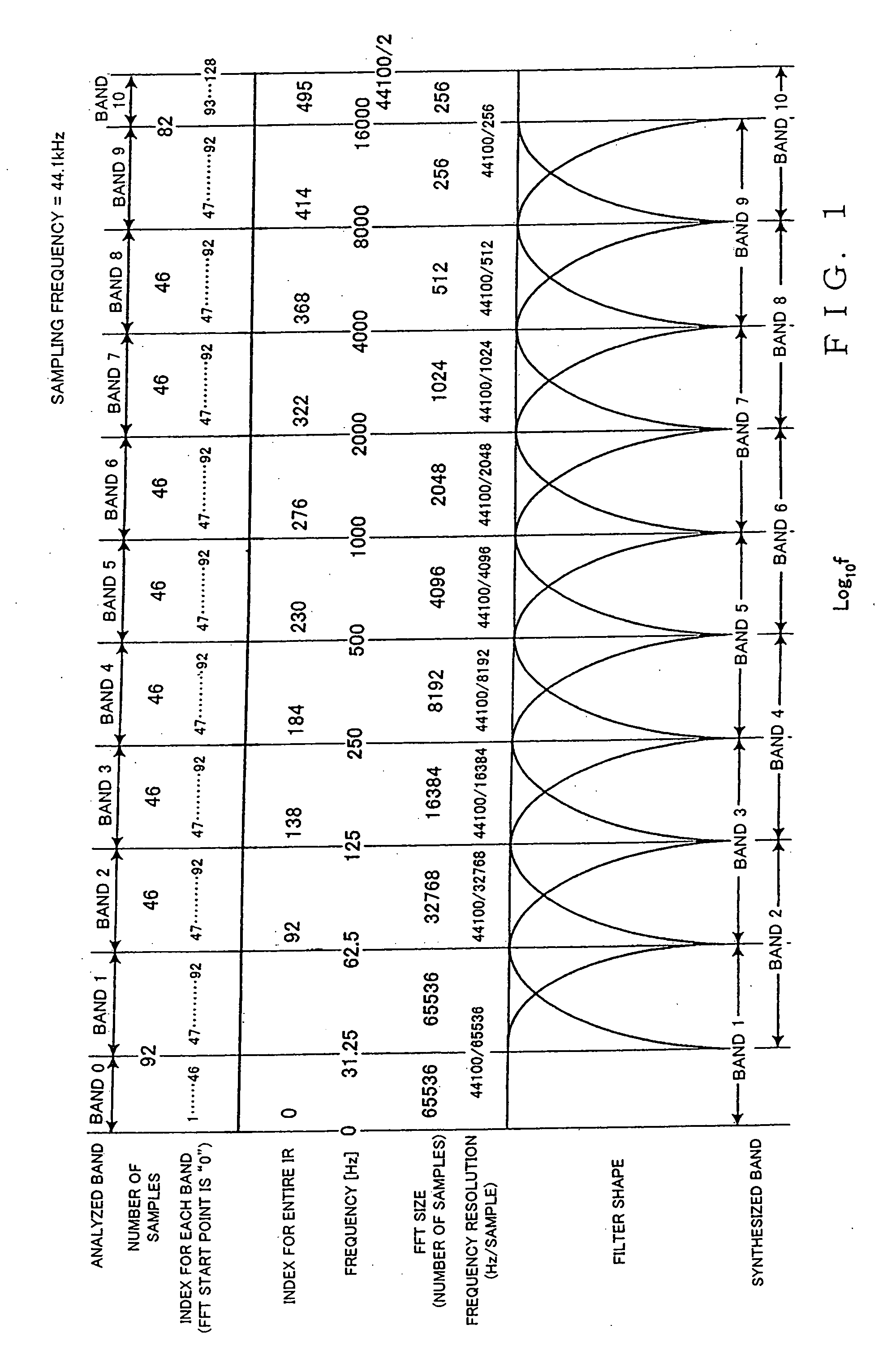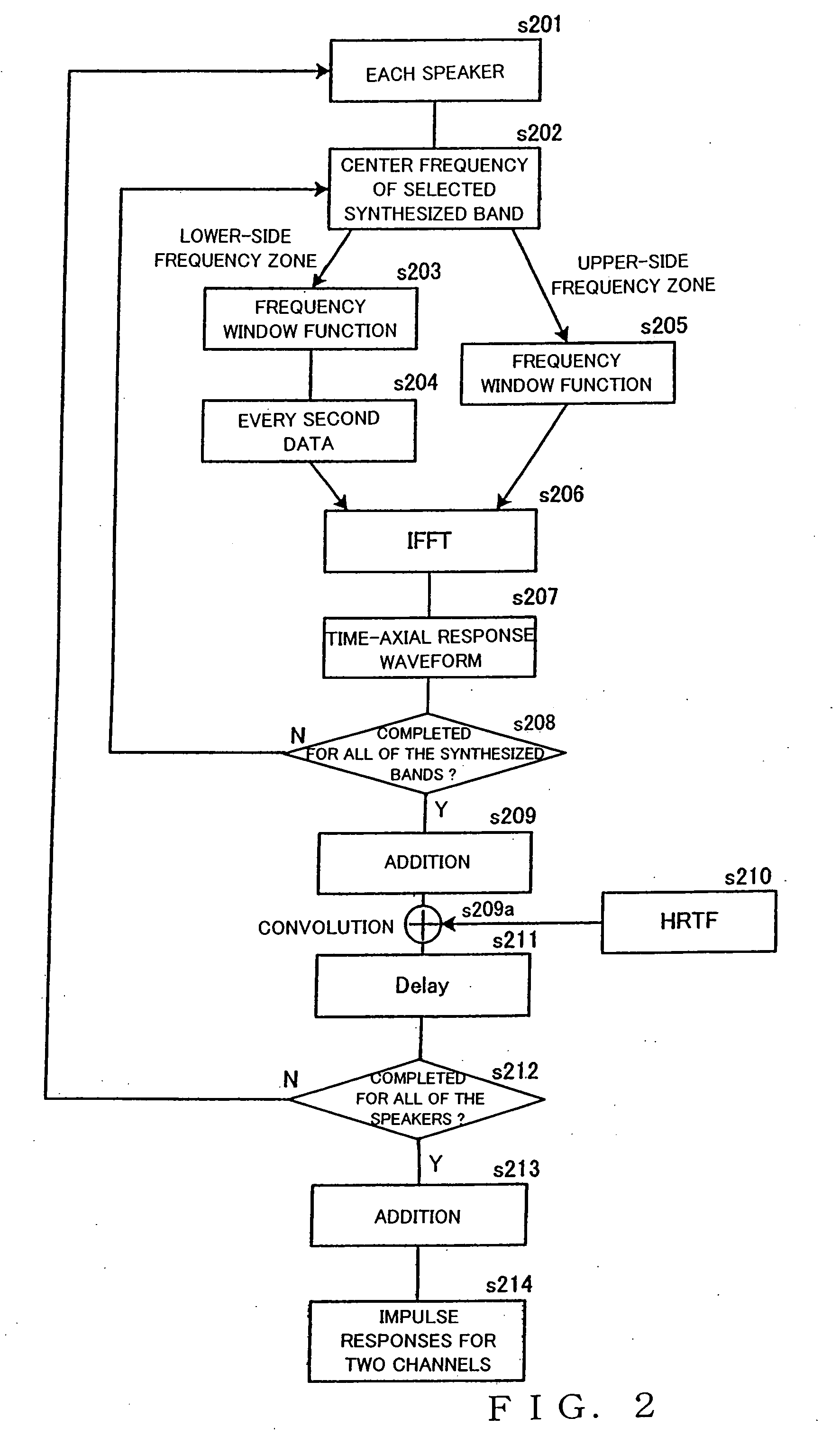Response waveform synthesis method and apparatus
a waveform and response technology, applied in the field of response waveform synthesis methods and apparatuses, can solve problems such as unnatural sound and unwanted noise, and achieve the effect of accurately reproducing the frequency characteristics of the original analyzed band
- Summary
- Abstract
- Description
- Claims
- Application Information
AI Technical Summary
Benefits of technology
Problems solved by technology
Method used
Image
Examples
Embodiment Construction
[0035]First, a description will be given about a response waveform synthesis method in accordance with an embodiment of the present invention. FIG. 1 is a diagram explanatory of the response waveform synthesis method which generally comprises dividing a predetermined audio frequency range (e.g., 0 Hz-22050 Hz) into a plurality of partial frequency bands (hereinafter referred to as “analyzed bands”) and then synthesizing a time-domain impulse response waveform of the entire audio frequency range on the basis of given frequency characteristics determined for each of the analyzed bands. In the illustrated example of FIG. 1, it is assumed that the sampling frequency of an audio signal processing system in question is 44.1 kHz and thus the upper limit of the audio frequency range is half of the 44.1 kHz sampling frequency, i.e. 22050 Hz. Therefore, if the sampling frequency of the audio signal processing system varies, the predetermined audio frequency range too varies.
[0036]In this case...
PUM
 Login to View More
Login to View More Abstract
Description
Claims
Application Information
 Login to View More
Login to View More - R&D
- Intellectual Property
- Life Sciences
- Materials
- Tech Scout
- Unparalleled Data Quality
- Higher Quality Content
- 60% Fewer Hallucinations
Browse by: Latest US Patents, China's latest patents, Technical Efficacy Thesaurus, Application Domain, Technology Topic, Popular Technical Reports.
© 2025 PatSnap. All rights reserved.Legal|Privacy policy|Modern Slavery Act Transparency Statement|Sitemap|About US| Contact US: help@patsnap.com



